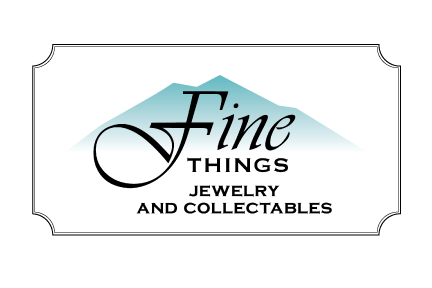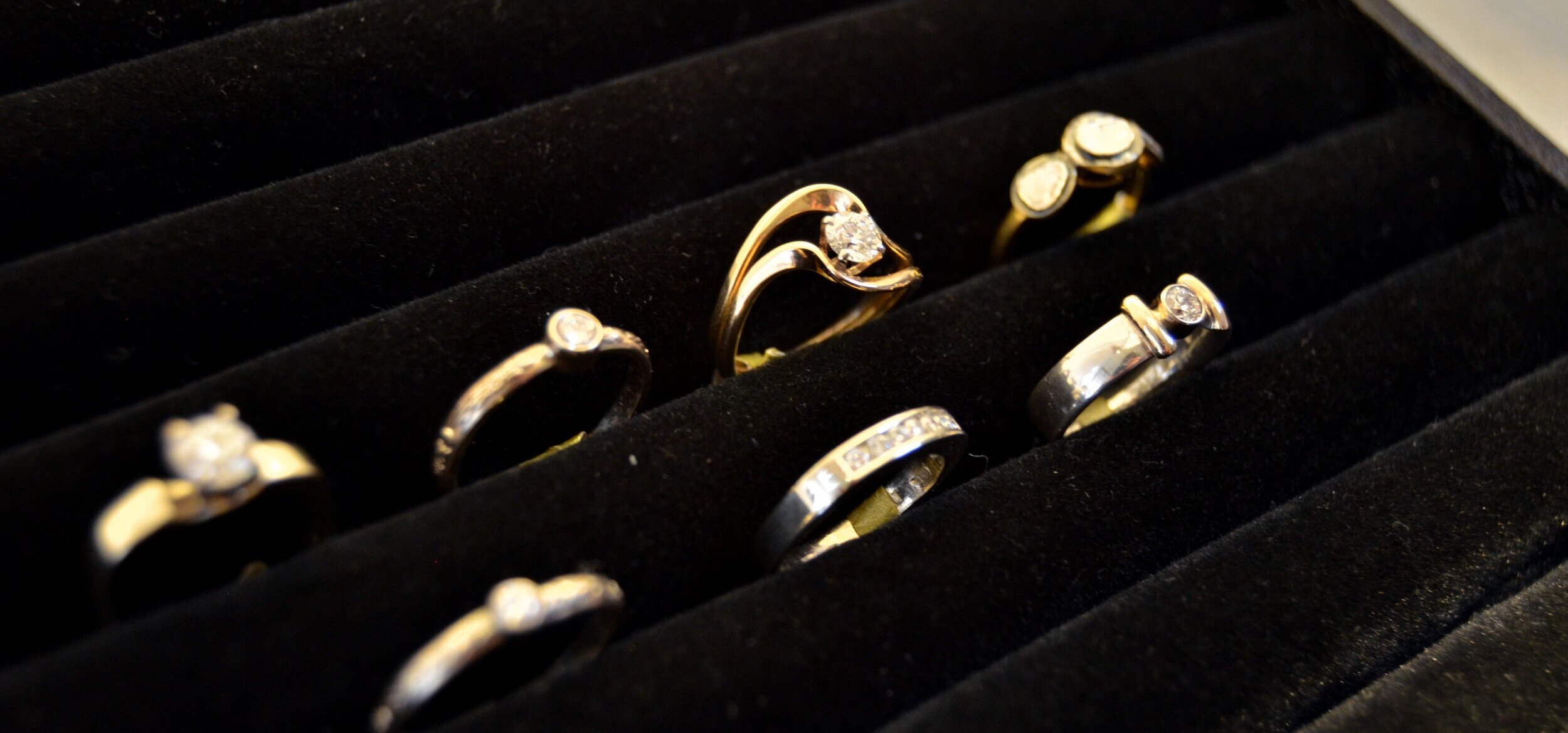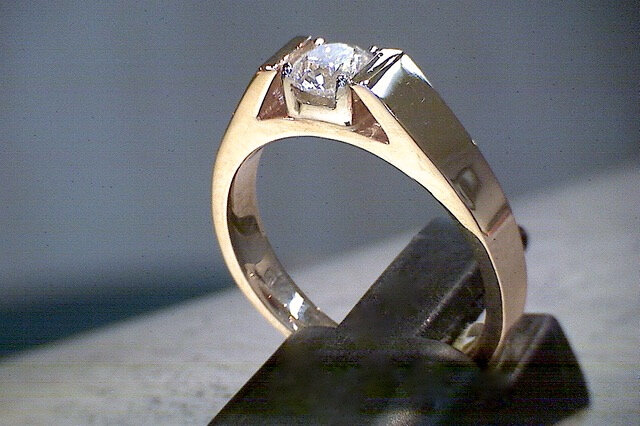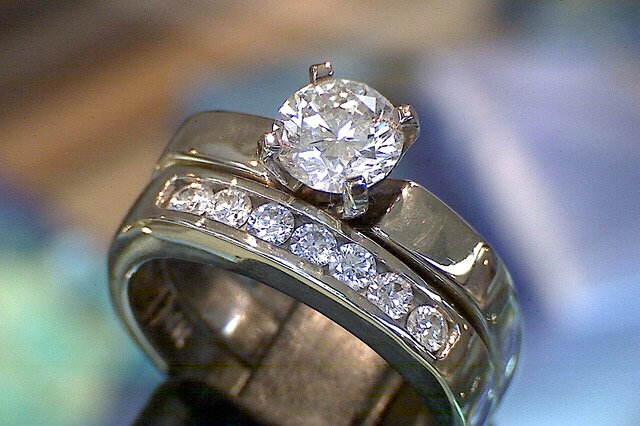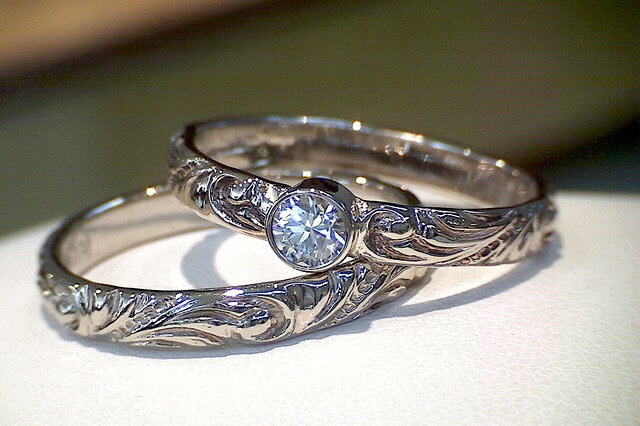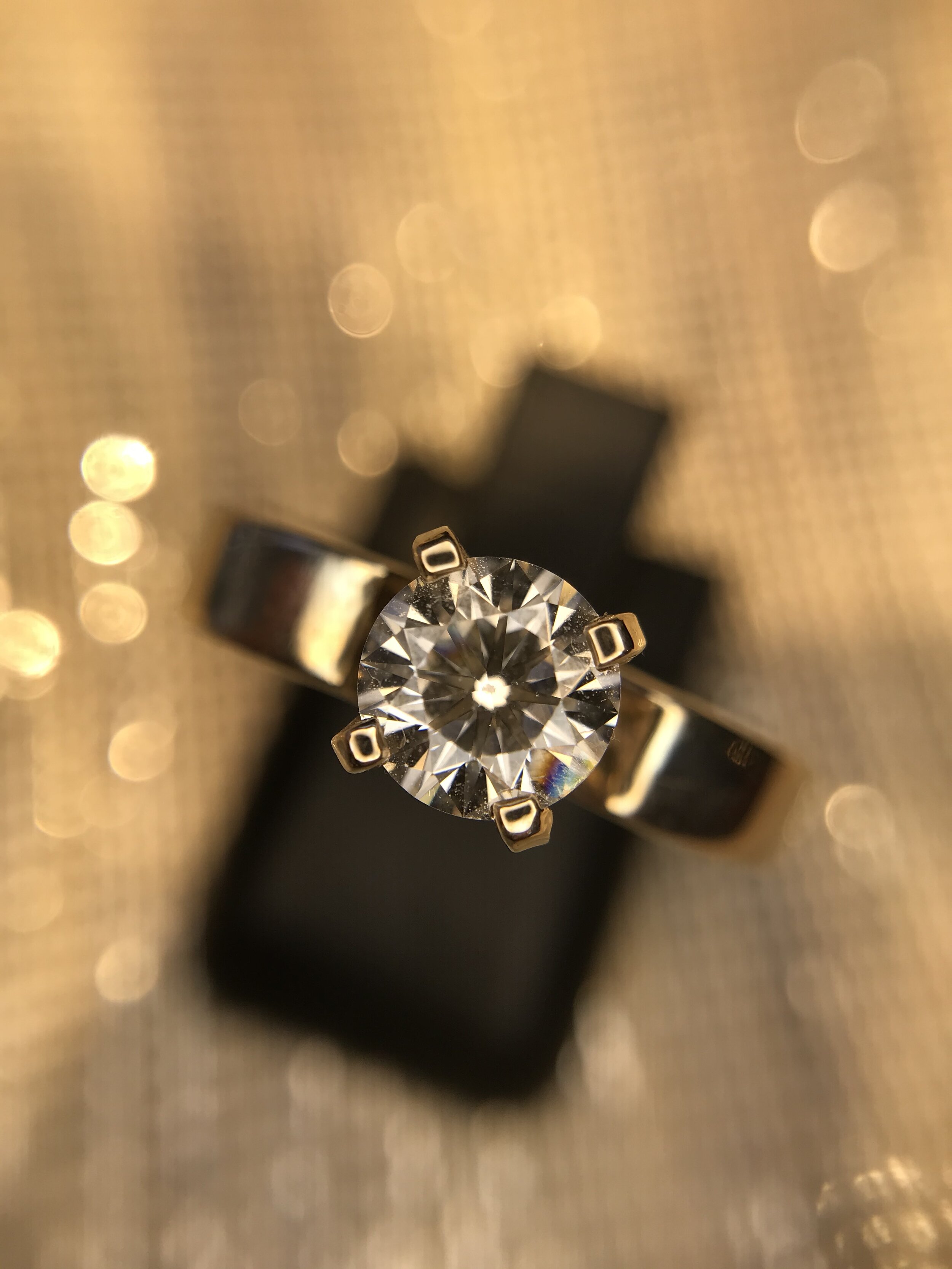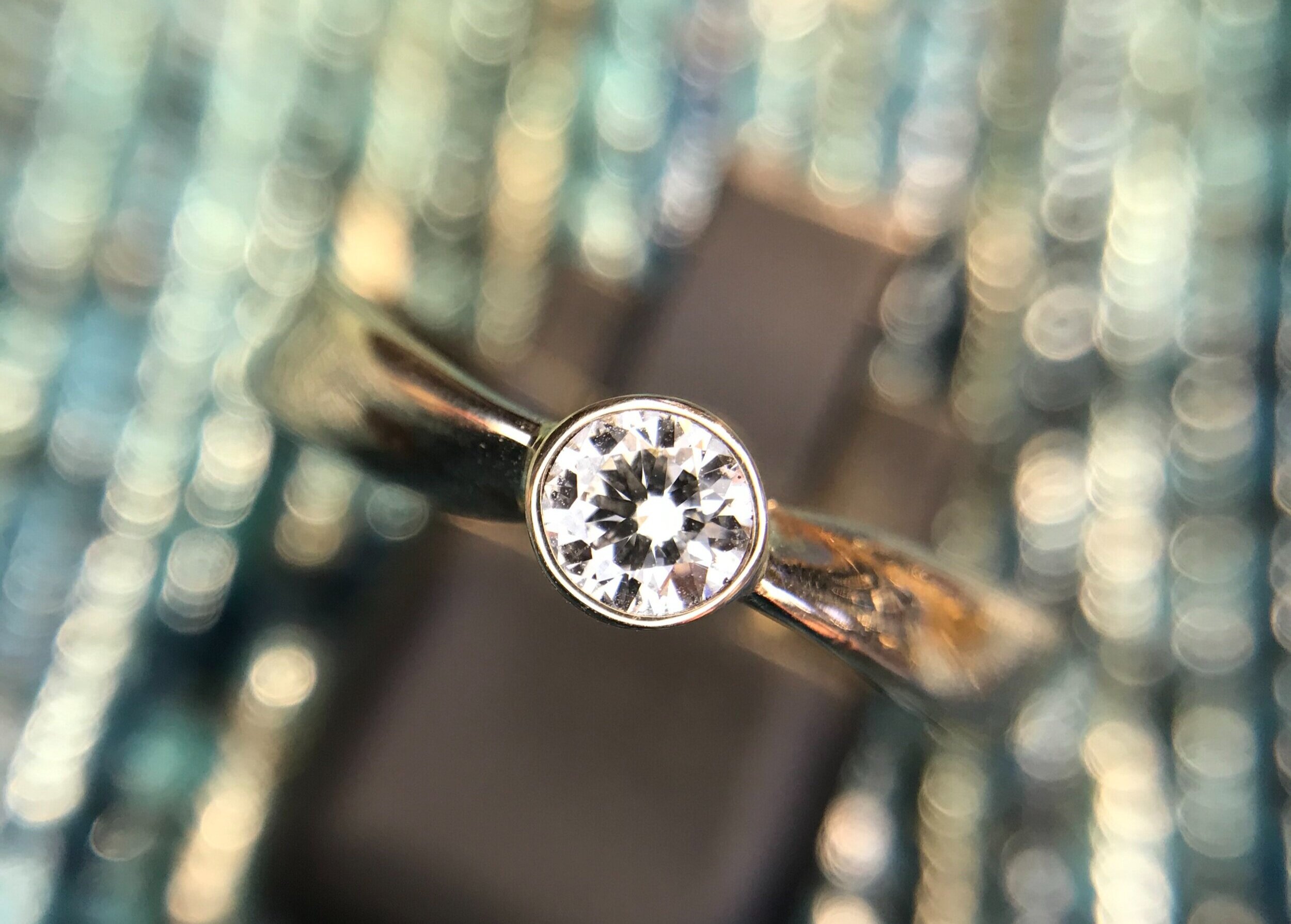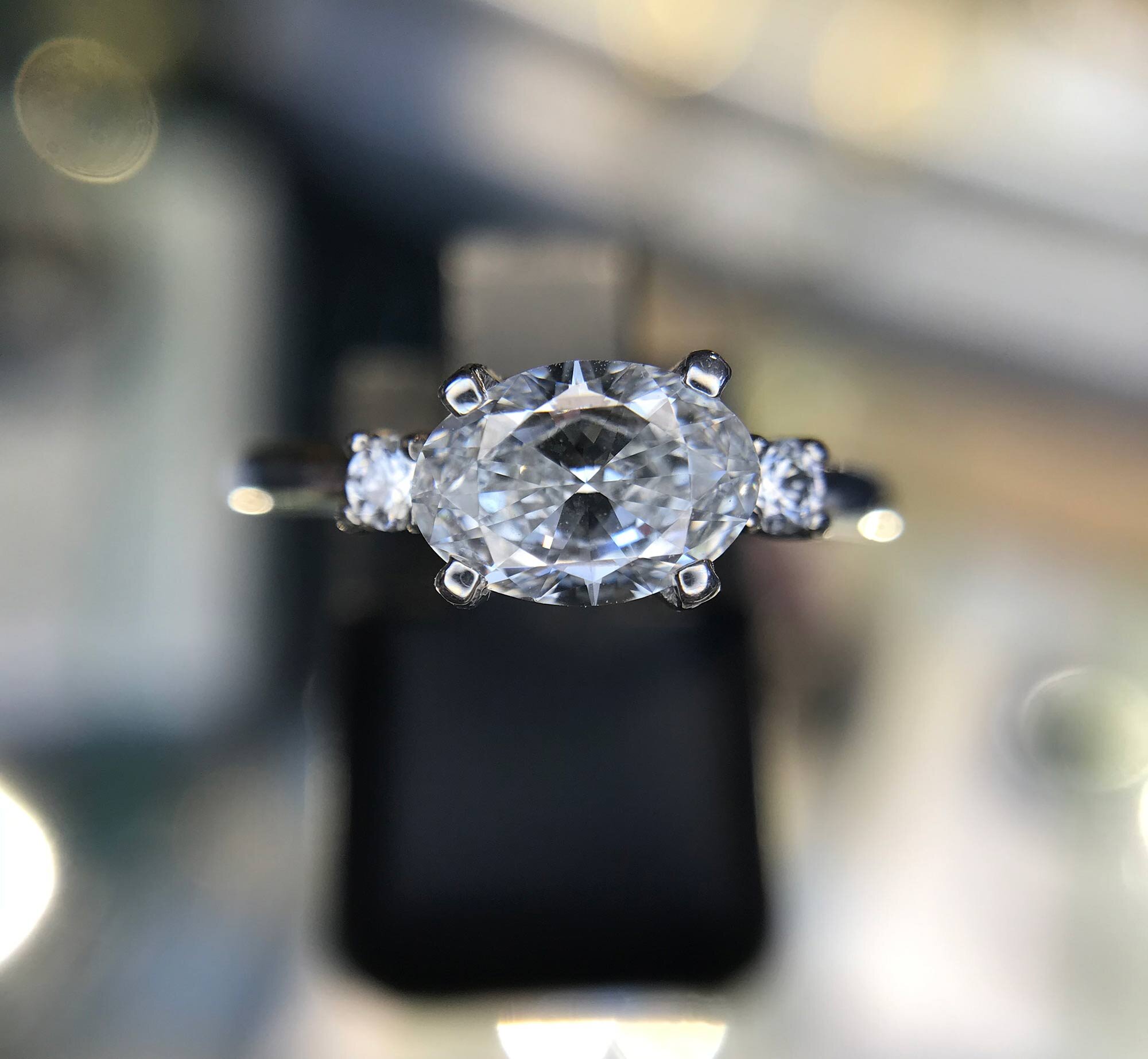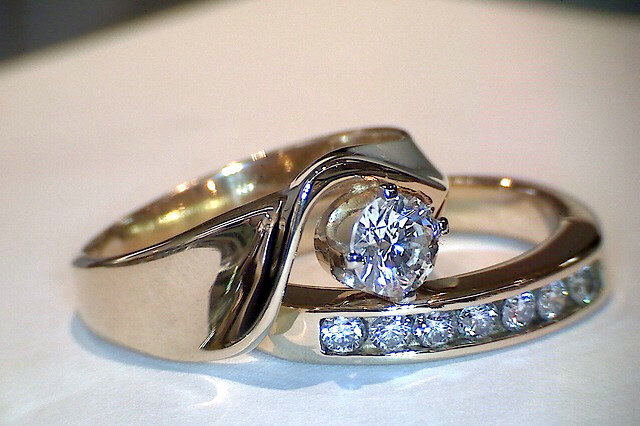What’s a Diamond Worth and How to Calculate the Value of Your Ring
Are you in the market for a New Diamond Ring?
Perhaps you are like many others who have purchased a Diamond Ring in the past and are looking to upgrade to a new, or larger, or different style ring. Many couples when they are first engaged may not have the resources to purchase the engagement ring, or wedding set, of their dreams. Some after 5 years, 10 years, 15 years, or more, decide to redo their wedding sets, or to “finally” get the ring of their dreams. Perhaps the style of your ring(s) does not fit your lifestyle and you are looking for something more practical. Remember, as many respectable jewelry stores will contest to, in a long-lasting relationship, jewelry can always be replaced and upgraded, but the most important part of any relationship is the commitment you share together. Whatever the case, you will most likely be trying to figure out the value of what you have. We are here to help you determine what a diamond is worth and how to calculate the value of your diamond ring.
The Value of a Diamond Ring comes down to putting a dollar value of the metal in the band, the price of the diamond(s), and estimating the value of the design and setting.
However the most valuable part of your ring is its sentimental value. Many Diamond Rings are treasured for their historical value, or inherited value, or meaningful value to you personally. These values are immeasurable and cannot be determined through any market analysis.
However, let’s see how each of the above components can be evaluated to determine a dollar value.
Calculating the Value of Diamonds
Valuing diamonds starts with establishing their quality level, which will be the basis for estimating their retail market price as part of new jewelry, and then, their resale value as pre-owned stones.
Determining the Quality of Diamonds
The value of a diamond is determined mostly by its four major quality characteristics (originated by the Gemological Institute of America), or the 4 Cs: color, clarity, cut, and carat. Many in the industry also add a fifth “C”, for cost. If a diamond comes with a certificate, in which these features are assigned, values and grades, evaluating the stone’s quality and comparing the diamond with other stones becomes relatively easy. So, the starting point in calculating the value of a diamond should be figuring out its quality grades. If the stone is not certified, you can have its quality evaluated by a gem lab such as the GIA (Gemological Institute of America) or AGS (American Gem Society), which can issue a grading report for the diamond for a fee. You may also seek out a Graduate Gemologist (GIA Certified) nearby from a local jewelry store. Some stores may also charge a fee and many times the results can be used when acquiring an appraisal on your ring.
Determining Diamond Market Price
The most straightforward way to figure out the market value of a diamond is to check the prices of stones with the same carat weight and of the same clarity, cut, and color grades. You can do your research online and calculate an average price, which will serve as an estimate of your diamond’s value. For example, if the stone in your ring has G color, VS2 clarity, Round Brilliant, Good cut, and weighs 0.75 carats, look up a number of loose diamonds with the exact same characteristics and average their prices. This is how you will arrive at a reasonable estimate for the retail price of your diamond as if it were new. Again these estimates are usually for new stones, not pre-owned stones.
Determining Diamond Resale Value
The retail market price of your diamond is not the price you can sell it at. Buyers of diamonds, such as jewelry stores or diamond dealers, won’t pay you retail price when they can buy the same stone at wholesale value. Wholesale prices are also not a good indicator of resale value because you will most likely get less from jewelers or dealers. They don’t have a reason to pay you as much as they pay their suppliers because, unlike them, you cannot provide guarantees and warranties, favorable financing arrangements, marketing support, and other extras that wholesalers bring to the table. A reasonable estimate for how much you could sell your diamond for would be around 10% to 30% of its retail price when it is new. If you sell the stone to the public (e.g., through online classifieds or auction websites), you might get a little more – between 30% and 60% of retail value. (The latter range is so wide because prices can vary significantly depending on where you sell and to whom.)
The actual quality of your diamond is another factor that many do not consider. Does it have scratches, or divits from being worn? Was it damaged under the prongs, or its edges damaged, when it was being set? Some of these damages are not noticeable until the diamond is removed from its current setting. For this reason we very seldom purchase pre-owned diamonds. However it may be possible to use your diamond for another ring, pendant, bracelet or earrings.
Calculating the Value of the Band
Determining the value of the metal depends on a number of factors. Most diamond rings are set in 14K yellow or white gold, 18K yellow or white gold, or platinum. Most other metals are determined to be too soft to be used for precious gemstones.
Questions to Ask: These answers will help to identify the quality of the metal and its settings.
What carat gold is the ring?
Is the metal solid or hollow?
Is it gold-dipped, gold-filled, or gold-plated?
Is the ring hand-crafted or machine–made?
In general, to determine the value of a band, first you need to find out what precious metal it is mainly made of – e.g., gold or platinum. Then, you need to establish the purity of the precious metal – for example, gold that is 14 karats contains about 58% pure gold. Next, you can weigh the ring (excluding the weight of any stones), and knowing the purity of its alloy, you can determine how many grams or ounces of the precious metal you actually have. For example, if you have 100 grams 14-karat gold, then the actual amount of pure gold in it should be around 58 g (58% purity). When you determine how much pure precious metal your ring contains, you can look up the prices per gram or ounce quoted by dealers who buy such metals. These quotes will be lower than the market price of the metal on commodity exchanges – for example, scrap gold dealers usually pay about 60%-80% of the market price of gold.
A Worked Example - Let’s See it in Action!
To see how the calculation of a diamond ring’s value works in practice, consider the following example: Suppose you have an 18K yellow gold ring with one 1-carat round diamond of VS2 clarity and H color, and with a cut grade of Very Good (all grades are on the GIA scale).
The Formula: Value of Diamonds + Value of Band = Value of Diamond Ring
Step 1: Value the Diamonds
Let’s say that after looking up a number of diamonds with the same characteristics online, you find that most of their prices fall within the $6,300-$6,800 range, and their average price is $6,500, which is a reasonable estimate for the retail value of a new stone. If you sell it to a diamond dealer or a jeweler, you can expect to get paid about $650.00 to $1,950.00 (10% to 30% of the retail price).
You might be able to sell the stone for as much as $3,900.00 (60% of retail value) if you try selling directly to the public (at an online auction, through an ad, etc.), but that’s not a given. The price might vary considerably depending on how you market the stone.
Step 2: Value the Band
Next, you need to estimate the value of the band. Suppose it weighs 8 grams. Since 18 karats equals 75% purity (18 divided by 24), the pure gold you have is 6 grams (8 x 75%). If the current gold price on commodity exchanges is $56 per gram (a completely made-up number for the purpose of illustration), then the market value of your gold is about $336.00 (6 x $56). You are most likely to get between 60% and 80% of this value if you sell to gold dealers, so the estimated price range for the band should be $201 to $269.
At the Low End: Weight x Purity % x Current Gold Price x 60% = Value of Band
At the High End: Weight x Purity % x Current Gold Price x 80% = Value of Band
Step 3: Add the Prices Together
When you add together the prices you are likely to get for your diamond and gold, it turns out that your ring is worth between $851.00 ($650 + $201.) and $2,219.00 ($1,950 + $269) – this is the range its price will most likely fall into if you sell the diamond and gold separately to dealers.
Thoughts to Consider:
As you can see, the range can be quite large. You might be able to get more for your ring if you sell directly to retail buyers, or online, but it is hard to say how much.
Some jewelers might offer you a deal whereby you exchange your stones or the entire ring for new jewelry and pay a part of the price in cash. In such a case, the stores will likely give you a better price for your jewelry than if you sold it for cash only. Much like using your car, or truck, as a trade–in when you purchase a new vehicle. Our advice is to stay cautious, and always get a second opinion.
